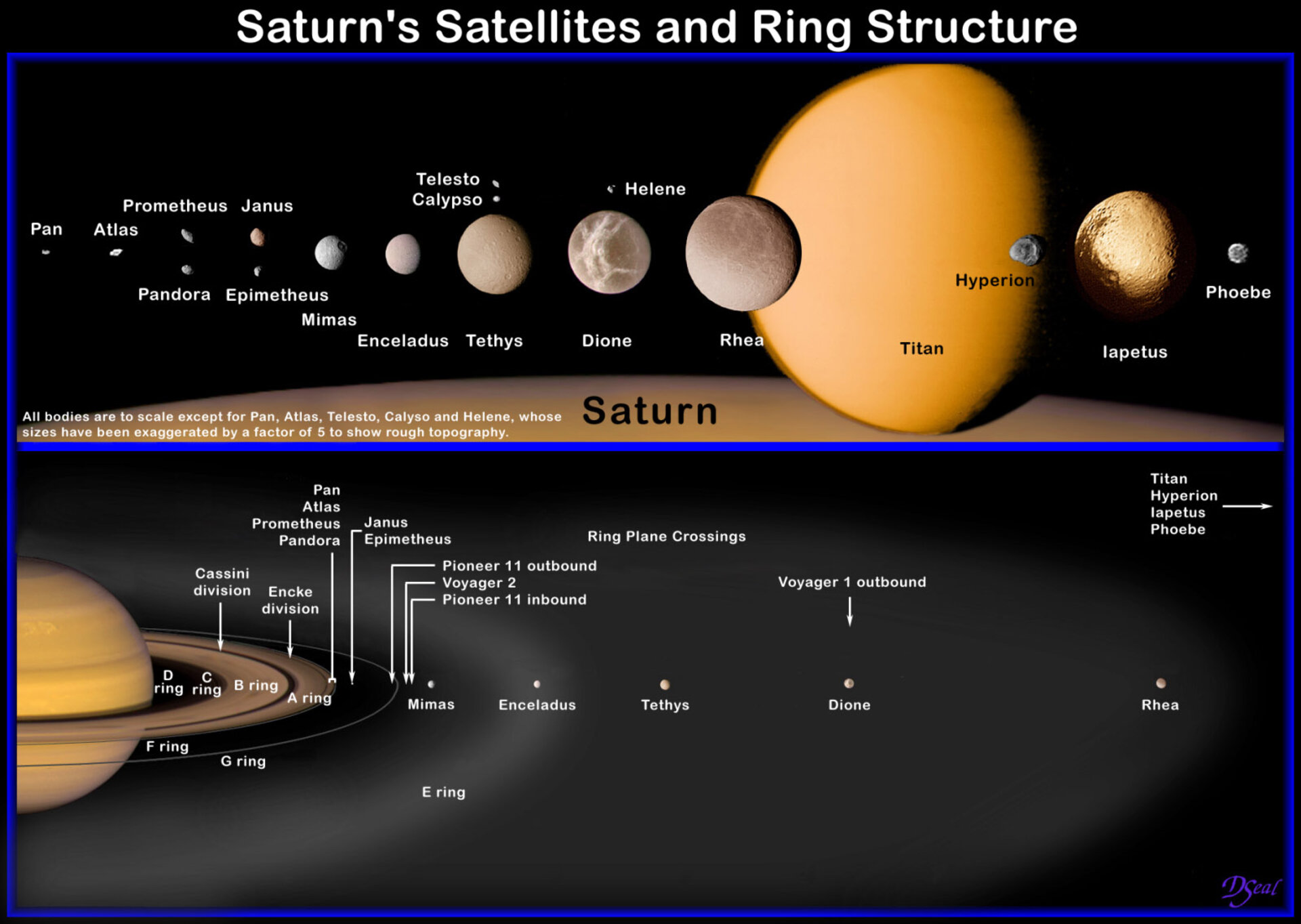Few of the notable moons of Saturn, each with its own unique characteristics and mysteries to explore.
Notable moons of Saturn
Saturn is known for its magnificent rings, but it also has a fascinating collection of moons that orbit the planet. These moons come in a range of sizes and shapes, with each having unique features and mysteries to explore. In this article, we will take a closer look at some of the most significant and well-known moons of Saturn.
Titan:
Titan is the largest moon of Saturn and the second-largest moon in the solar system after Jupiter's Ganymede. It is the only moon in the solar system with a substantial atmosphere, which makes it a particularly intriguing object to study. The atmosphere of Titan is primarily composed of nitrogen, with traces of methane and other gases. The surface of Titan is covered in lakes, rivers, and seas of liquid methane and ethane. Scientists believe that Titan's atmosphere and surface could provide valuable insights into the early Earth's environment before life began.
Enceladus:
Enceladus is a small, icy moon that has captured the attention of scientists due to its active geology. Geysers of water ice and vapor erupt from the south pole of Enceladus, indicating the presence of subsurface water. This subsurface ocean makes Enceladus a prime target for astrobiological studies, as it could potentially harbor life. Scientists have also discovered organic molecules on Enceladus, which further support the possibility of life on this icy moon.
Mimas:
Mimas is a small moon that is heavily cratered, with a large impact crater called Herschel that gives it a distinct appearance resembling the Death Star from Star Wars. The Herschel crater is approximately 130 kilometers in diameter, which is about one-third of the moon's size. The impact that created the Herschel crater would have been powerful enough to destroy Mimas, but the moon survived, and the crater has become one of its defining features.
Iapetus:
Iapetus is a two-toned moon with a bright, icy leading hemisphere and a darker, heavily cratered trailing hemisphere. The cause of this dichotomy is still unknown, but scientists believe that it could be due to the migration of material across the moon's surface. Iapetus also has a prominent equatorial ridge that runs along its center, making it look like a walnut.
Rhea:
Rhea is the second-largest moon of Saturn and has a heavily cratered surface with bright, rayed craters. Rhea also has a thin atmosphere of oxygen and carbon dioxide, which is believed to have been created by the moon's surface interacting with the plasma in Saturn's magnetosphere.
Hyperion:
Hyperion is an irregularly shaped moon that has a porous, sponge-like surface that is covered in craters. The moon's odd shape is due to its low density, which makes it one of the least dense moons in the solar system. Hyperion also has a strange, tumbling rotation, which makes it difficult for scientists to predict its orientation accurately.
Phoebe:
Phoebe is a distant, irregularly shaped moon that is believed to be a captured object from the Kuiper Belt, a region of the solar system beyond Neptune that is populated with icy bodies. Phoebe has a heavily cratered surface that is similar to other Kuiper Belt objects, and its orbit is retrograde, meaning that it moves in the opposite direction of Saturn's other moons.
Dione:
Dione is a mid-sized moon with a heavily cratered surface that also has a system of bright, linear features called "wispy terrain." These features are believed to be tectonic in origin, with cracks and faults forming in the moon's icy crust. Dione also has a thin atmosphere of oxygen and carbon dioxide, similar



Comments
Post a Comment